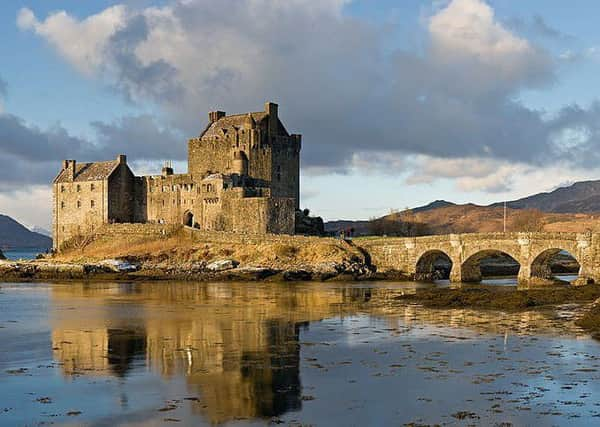When Eilean Donan Castle was destroyed by the Royal Navy


A clan rallying point for centuries, the castle we see today is a very modern version of the fortified structure which was first built in the 13th Century to defend against invading Norsemen.
It was re-opened just 86 years ago, in July 1932, following a 20-year restoration job which almost completely rebuilt the castle and added a bridge for ease of access from the loch side. No longer did it have to be reached by boat.
Advertisement
Hide AdAdvertisement
Hide AdThe castle has since become one of Scotland’s most photographed landmarks.
Until the reconstruction of Eilean Donan, the castle lay ruined for 200 years after it was all but destroyed in a Royal Navy attack at the height of the 1715 Jacobite rebellion.
It was 299 years ago today - May 10 1719 - that it was bombarded at close range by three vessels that moved into Loch Duich in the early hours.
The castle had been garrisoned by the Jacobites and their Spanish counterparts brought to Scotland to assist in the attempt to remove George I from the throne.
Advertisement
Hide AdAdvertisement
Hide AdHeadquartered a Eilean Donan, the Spaniards were accompanied by a number of clansmen, including the chief of Clan Mackenzie, 5th Earl of Seaforth, and members of Clan MacRae, the traditional constables of the castle, and a number of Irish soldiers.
On May 10, the ships Worcester, Enterprise and Flambourough appeared before Eilean Donan and fired upon the Spanish troops who flocked to the shore.
The log of Captain Boyle of the Worcester details how the Spanish - described as having long black hair and dressed in white and yellow uniforms - were attacked at close range.
It took less than three days to demolish the bulk of the castle with dozens of prisoners taken, including 39 Spanish soldiers, according to historian TC Smout in his book Scotland and the Sea.
Advertisement
Hide AdAdvertisement
Hide AdThe Spanish magazine of 332 barrels of powder and 52 of shot were divided among the Royal Navy crews, with the ammunition used to attack the local area, according to Smout.
Several corn barns were razed and Strome was plundered, with a house at Applecross also destroyed.
The Spanish prisoners were shipped to Cantabria - and Eliean Donan was deserted shortly thereafter.
Captain John MacRae-Gilstrap, a direct descendant of the MacRae constables bought the pile in 1911.
Advertisement
Hide AdAdvertisement
Hide AdThe former officer in the Black Watch set about restoring the fabric of the castle, which was constructed with walls up to 13ft deep.
His efforts to rebuilt the Highland stronghold were highly praised by the press of the day.
One newspaper described how the renovation spoke of MacRae-Gilstrap’s “never-dying love of the Gael...and determination that the clan spirit shall live.”
It was noted his commitment came when other Scottish castles were undergoing “wholesale demolition” given the rising costs of maintaining such properties.
Advertisement
Hide AdAdvertisement
Hide AdThe Dundee Courier, in July 1932, described the completion of the work as “nothing short of amazing” given the numerous obstacles faced by those working on the vast construction job in the remote location.
“Some of the largest stones for the rebuilding, weighing about 1.5tons, were taken from the hills by Lochlongside, and their transportation presented a grave problem,” the report said.
It added: “These were carried to the castle as they might have been 500 years ago.
“Horses dragged them to the shore, and when the tide was out they were secured by chains to the bottom of a boat. The incoming tide raised the boat, which was rowed over to the castle.
“Not till the end of the building was a crane employed.”
Advertisement
Hide AdAdvertisement
Hide AdOn attending the opening ceremony, the reporter was clearly taken aback by the sight of the new castle.
He wrote: “The visitor, seeing Eilean Donan for the first time, might be pardoned for doubltng whether the site of any other castle in any part of the world surpasses in natural grandeur the rugged setting of the traditional stronghold of the Earls of Seaforth.”
The castle continues to draw vast numbers of admirers today and welcomes more than 500,000 visitors a year.
